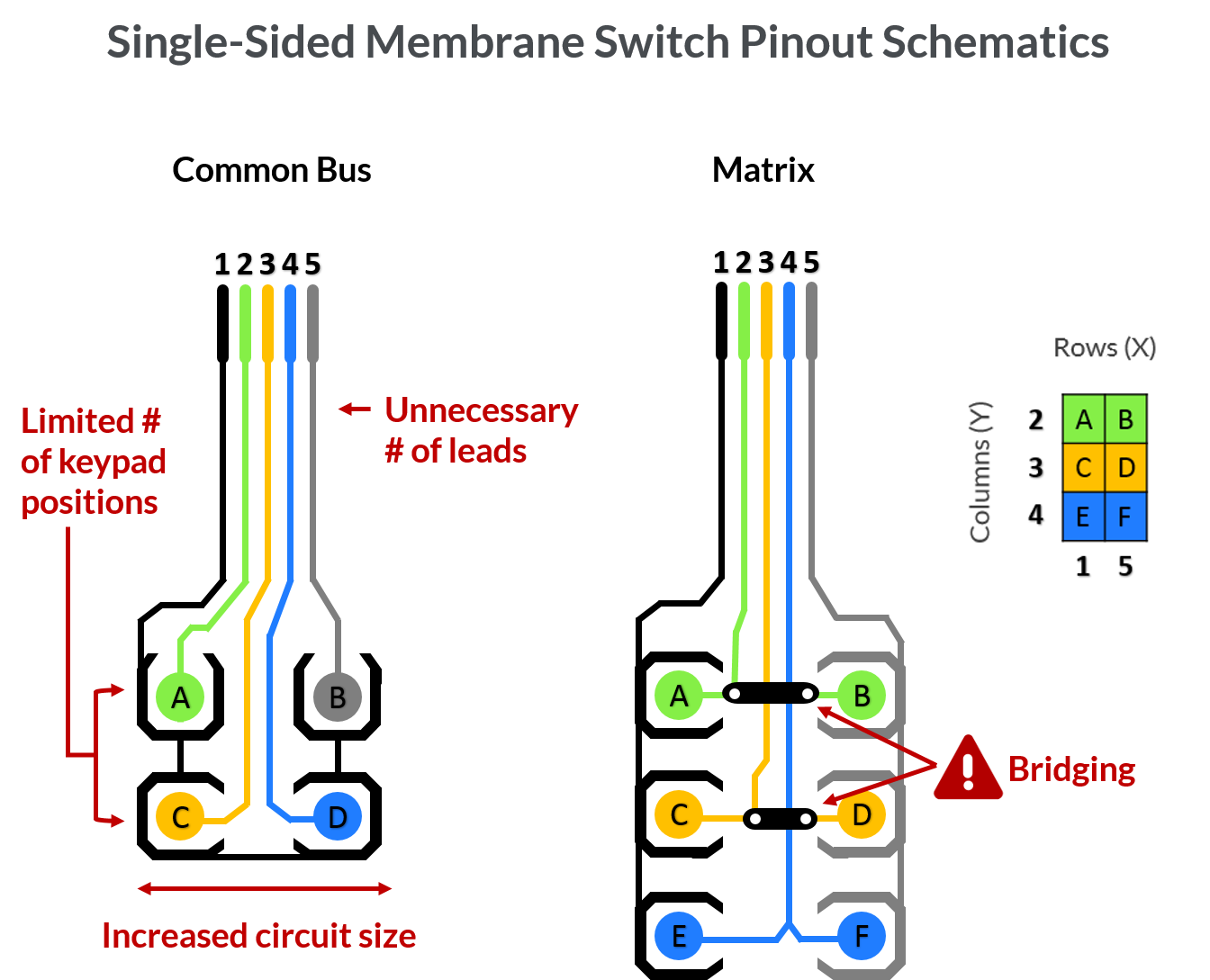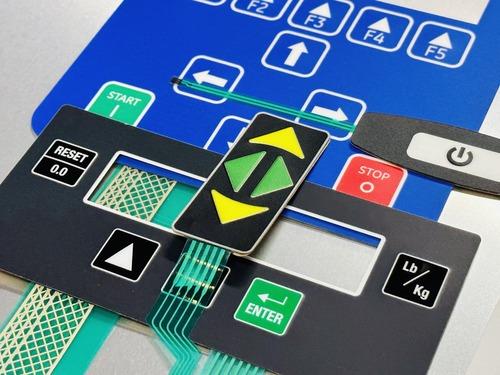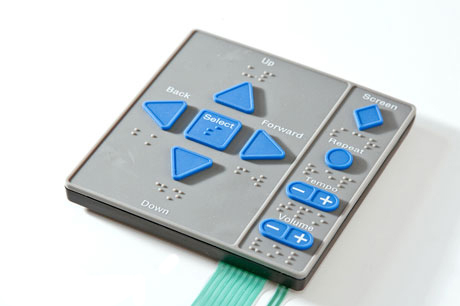Membrane Switches vs. Traditional Switches: What You Need to Know
Membrane Switches vs. Traditional Switches: What You Need to Know
Blog Article
Comprehending the Significance of Membrane Switches in Interface
Membrane switches are indispensable elements in the style of effective individual interfaces, facilitating not only functionality yet likewise improving visual appeal and individual communication. Their special attributes, such as resistance to ecological elements and personalized layouts, make them ideal for a diverse variety of applications throughout several sectors. As we check out the future trends and numerous advantages linked with Membrane innovation, it comes to be clear that these switches are greater than simply parts; they represent a convergence of advancement and functionality. The effects of this technology on customer experience are worth taking a look at better.
What Are Membrane Switches?

The spacer layer, which has sticky residential or commercial properties, enables for the splitting up of the circuit layer from the overlay, guaranteeing that the button remains in a non-activated state until pressed. When pressure is related to the overlay, it compresses the spacer layer, connecting the gap and completing the circuit in the underlying layer. This style not only lowers the physical area required for standard mechanical switches yet also boosts the resilience of the device, as Membrane buttons are usually immune to dirt, dampness, and other environmental aspects.
Typically found in applications varying from customer electronics to medical gadgets, Membrane switches are important to modern innovation, offering a effective and straightforward interface that lines up with modern style demands.
Advantages of Membrane Switches
While many switch innovations exist, Membrane Switches offer distinct advantages that make them especially preferable in numerous applications. One of the key benefits of Membrane buttons is their compact layout, which enables for space-saving executions in tools where genuine estate is restricted. Their slim profile not only boosts aesthetic allure but also facilitates lightweight construction.
An additional significant advantage is their resistance to ecological elements. Membrane buttons are usually sealed versus dampness, dirt, and pollutants, making them optimal for use sought after atmospheres, such as medical devices and commercial devices. This sturdiness prolongs the life-span of the switch, lowering upkeep prices and enhancing integrity.
Furthermore, Membrane buttons can be customized to satisfy specific design needs, including unique graphics and colors that improve individual communication. Their responsive feedback alternatives can also be customized to give a satisfying customer experience. Additionally, Membrane switches are cost-efficient, especially in high-volume applications, as they can be created successfully.
Applications in Numerous Industries

In the customer electronic devices field, Membrane switches prevail in tools such as microwaves, cleaning machines, and remotes. Their tactile feedback and aesthetic alternatives improve user experience while giving a smooth, modern-day appearance. In addition, auto makers make use of Membrane switches in control panel controls and infotainment systems, where space is limited, and individual engagement is crucial.
Additionally, the commercial field leverages Membrane buttons in control panels for equipment and equipment, permitting intuitive operation in commonly extreme atmospheres. Their resistance to chemicals and wetness makes certain durability and integrity in these applications. Generally, the versatility of Membrane Switches adds considerably to their extensive use, making them indispensable in different technological domain names.
Layout Factors To Consider for Membrane Buttons

When creating Membrane switches, numerous essential factors to consider must be considered to guarantee optimum performance and user experience. The selection of materials is essential; choosing sturdy, premium substratums can enhance the switch's durability and resistance to ecological factors such as wetness and temperature level fluctuations.
Secondly, the design of the graphic overlay ought to prioritize clearness and simplicity of use. Icons and message have to be understandable, and the design ought to assist in intuitive interaction (membrane switches). Furthermore, tactile comments is crucial; incorporating a tactile dome or other systems can boost the user experience by offering physical verification of activation
An additional vital factor is the switch's electrical efficiency. Developers should guarantee that the conductive traces are correctly developed to reduce resistance and stay clear of signal interference. This entails examining the called for actuation force and making certain compatibility with the electronic elements they will interface with.

Future Trends in Membrane Technology
As innovation continues to development, Membrane buttons are positioned to evolve dramatically, driven by advancements in materials and manufacturing methods. One emerging pattern is the incorporation of sophisticated materials, such as conductive inks and adaptable substrates, which our website enhance toughness and lower the total weight of Membrane buttons. These materials not only improve the tactile reaction yet likewise enable the design of buttons that can withstand harsher environmental conditions.
In addition, the combination of touch-sensitive modern technologies is transforming conventional Membrane Switches right into even more interactive user interfaces. Capacitive touch sensors embedded within Membrane button panels can provide a much more user-friendly and responsive individual experience, lining up with the expanding need for smooth, contemporary designs in customer electronics.
Furthermore, developments in printing methods, such as electronic and 3D printing, allow rapid prototyping and modification of Membrane buttons. This adaptability permits suppliers to react faster to market needs and customer choices.
Last but not least, sustainability is coming to be a substantial emphasis, with suppliers discovering green products and procedures. As these fads unfold, the future of Membrane innovation promises enhanced capability, aesthetic appeal, and ecological responsibility, strengthening their role in sophisticated user interfaces across numerous markets.
Verdict
In verdict, Membrane Switches stand for a vital element in the style of customer interfaces, combining performance with visual adaptability. As developments in innovation continue, the evolution of Membrane buttons is anticipated to more fine-tune user interfaces, driving technology and boosting use in a progressively intricate technical landscape.
Membrane switches are indispensable elements in the layout of efficient individual interfaces, promoting not only performance but also enhancing visual appeal and customer communication.Membrane Switches serve as a crucial element in various customer interfaces, helping with a seamless communication between individuals and electronic tools.While many switch innovations exist, Membrane Switches offer unique benefits that make them specifically desirable in different applications.In addition, Membrane buttons can be personalized to fulfill particular style needs, incorporating distinct graphics and shades that enhance customer interaction.In verdict, Membrane Switches represent an essential element in the design of customer Look At This interfaces, combining capability with aesthetic adaptability.
Report this page